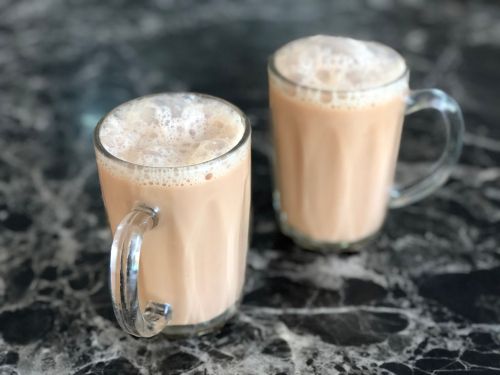
The Art and Tradition of Malaysia's Frothy 'Pulled Tea'
- Apr 14, 2025
Teh tarik, Malaysia's unofficial national beverage, is a creamy, frothy black tea, savored not just in its homeland but also in Singapore. This beverage is, at any time of the day, the go-to comfort drink of Malaysians and Singaporeans alike.
As Ange Branca, the proprietor of Philadelphia-based Malaysian restaurant, Kampar, pointed out, "Malaysia is one of the few countries where you can get coffee and tea 24 hours a day."
Teh tarik's distinctiveness hinges on its 'pulled' preparation, giving a new meaning to the act of tea brewing. This tea-pulling process, often showcased in teh tarik championships held in Malaysia, elevates this beverage from a simple milk tea to an artistically crafted delight.
The drink is deeply intertwined with the Peranakan culture, a community associated with mixed heritage, primarily from Southeast Asia. The tea's creation traces back to Indian Muslim immigrants' creativity during the colonial era by Britain, and it subsequently became a symbol of their cultural legacy in Malaysian kopitiams, traditional coffee shops managed by Peranakan Chinese.
In Malaysia, going out invariably involves tea and coffee. "Unlike in the U.S., a hangout usually involves alcohol, if you go to Malaysia and hang out, we always involve tea and coffee," explicated Kyo Pang, owner of Kopitiam in New York City.
Teh tarik can be found everywhere in Malaysia-on the streets and in the kopitiams, and it's served throughout the day. It is also a familiar sight at mamak stalls, run predominantly by Indian Muslim families, where teh tarik pairs excellently with roti canai, a South Indian flaky flatbread.
Countries like Malaysia and Singapore claim teh tarik as their local specialty, and the kopitiams culture also spread across other Southeast Asian nations, like Indonesia. Valencia Then, an Indonesian-American and owner of Uncle Fung Coffee Stall in Los Angeles, sees kaya toast, soft-boiled egg, and teh tarik as staple Singaporean snacks.
Teh tarik's unique frothy texture is achieved by 'pulling' a concoction of strong black tea and condensed milk between two containers until it reaches a creamy consistency.
The 15th century saw Chinese tea's arrival in Malaysia, and the country's first tea plantation, the BOH Plantations, was established by a British businessman in 1929. Malaysian tea grew amidst the favorable conditions of the Cameron Highlands, yielding a sturdy, high-tannic black tea.
However, costs kept this prized commodity away from locals during the early 20th century, leaving them with tea dust- a byproduct of tea processing. Brewed tea dust unlocked a stronger tea, even more potent than the black tea from Cameron Highlands. Sweetened with condensed milk and 'pulled', this produced a delightful, rich, and cost-effective brew.
Hand-pulling the tea brings down its temperature to a drinkable level and also creates a natural foam, explains Pang. The method, much like wine aeration, softens the tannin in the tea, improving its taste dramatically.
Teh tarik, though indigenous to Malaysia, has even reached US shores, with it being served at places such as Kopitiam in New York City, Kampar in Philadelphia, and Uncle Fung Coffee Stall in Los Angeles. However, its authenticity is guarded fiercely, as essential ingredients like the high-tannic black tea from Malaysia are often not readily available in the US.
Branca emphasizes that "condensed milk in tea is always going to be good, but if you're Malaysian and you've had teh tarik in Malaysia, you know what it's supposed to be. Malaysians tend not to serve it unless they can get high-tannic tea."
Branca also notes the egalitarian nature of teh tarik, contrasting it against the prestige associated with tea-drinking in other parts of the world. "Even though tea in other countries is associated with high-class culture and people, teh tarik is a very down-to-earth local Malaysian drink with some of the best teas in the world."






